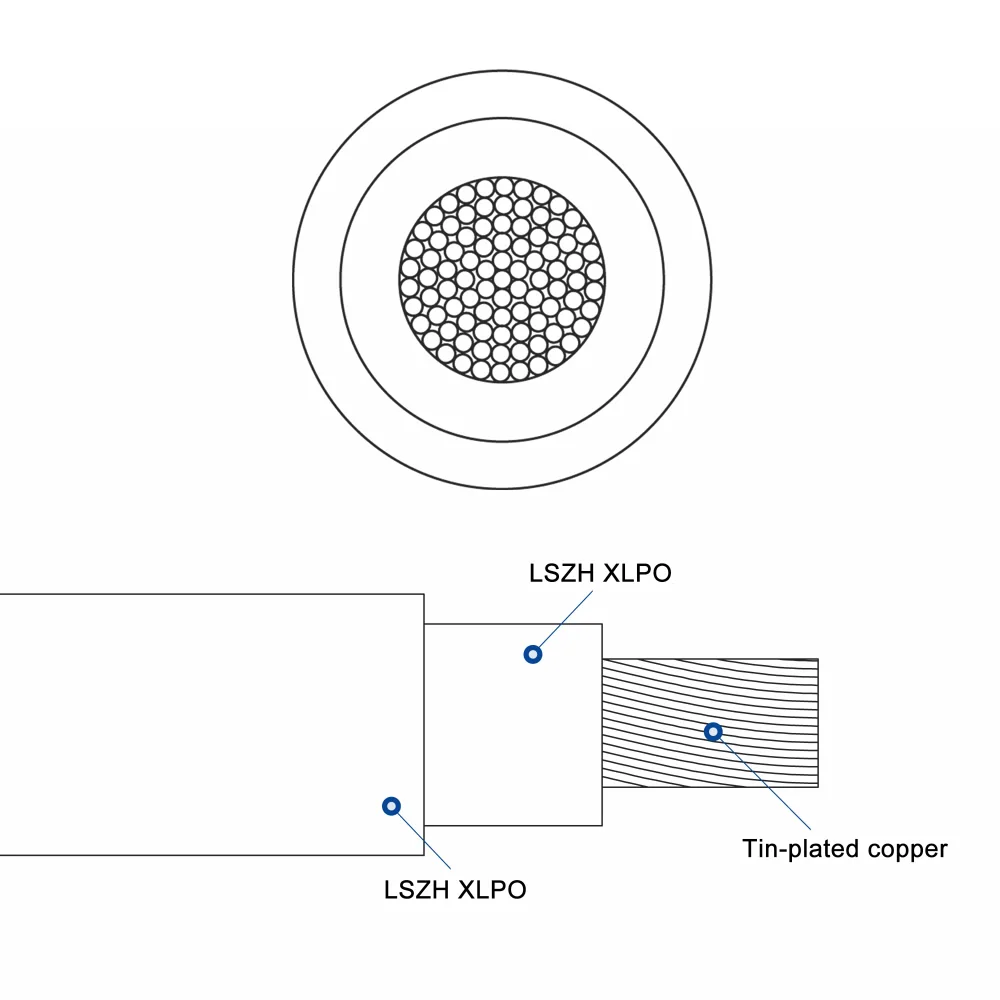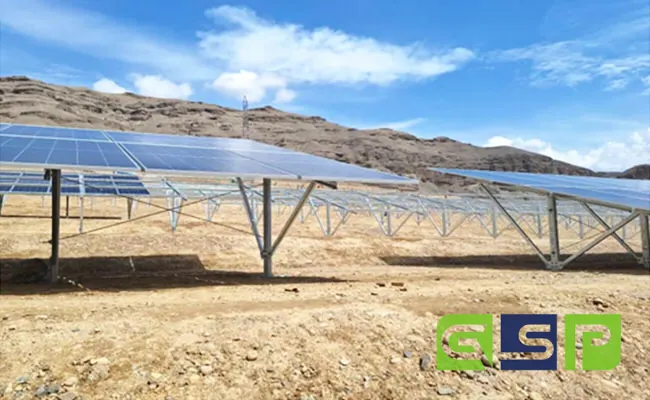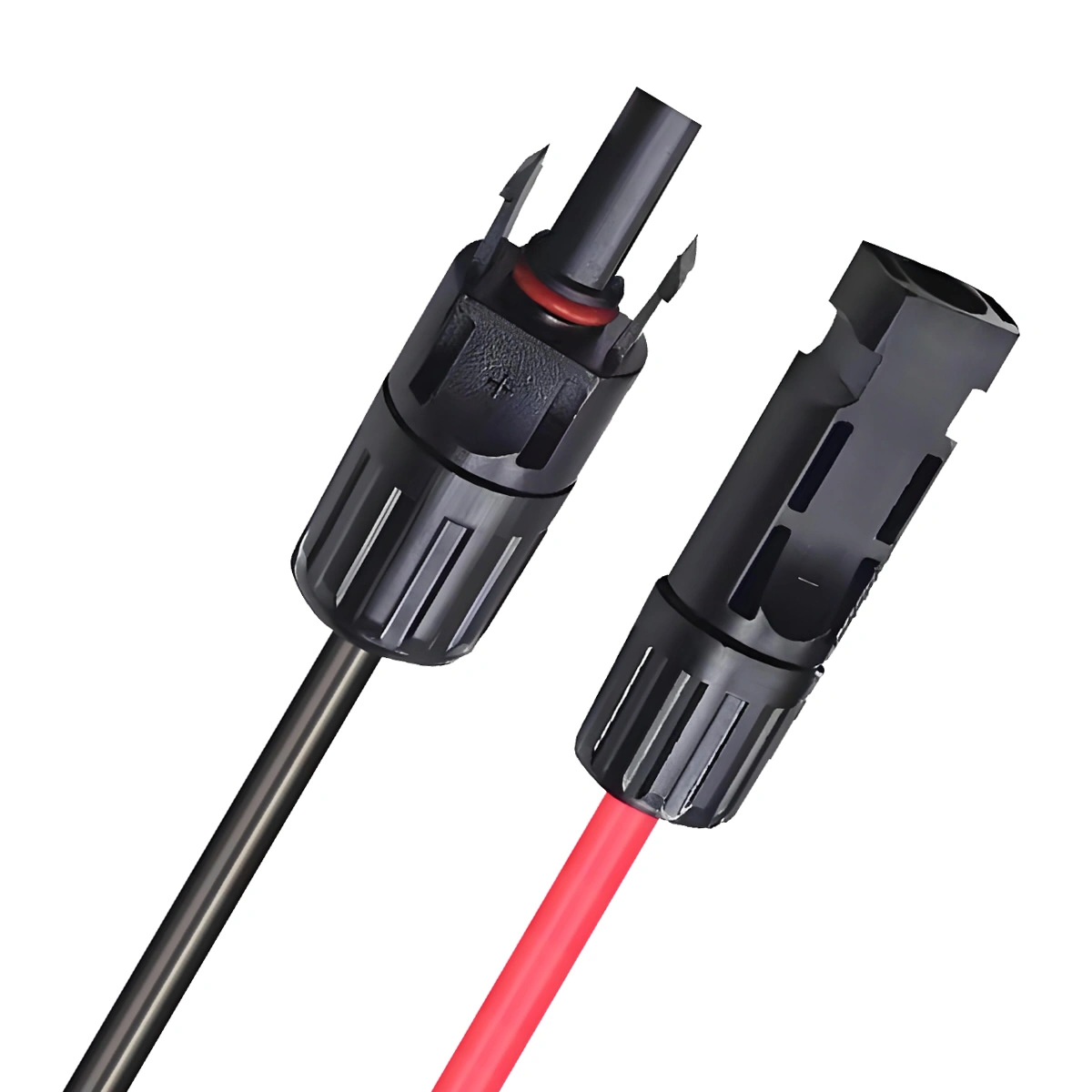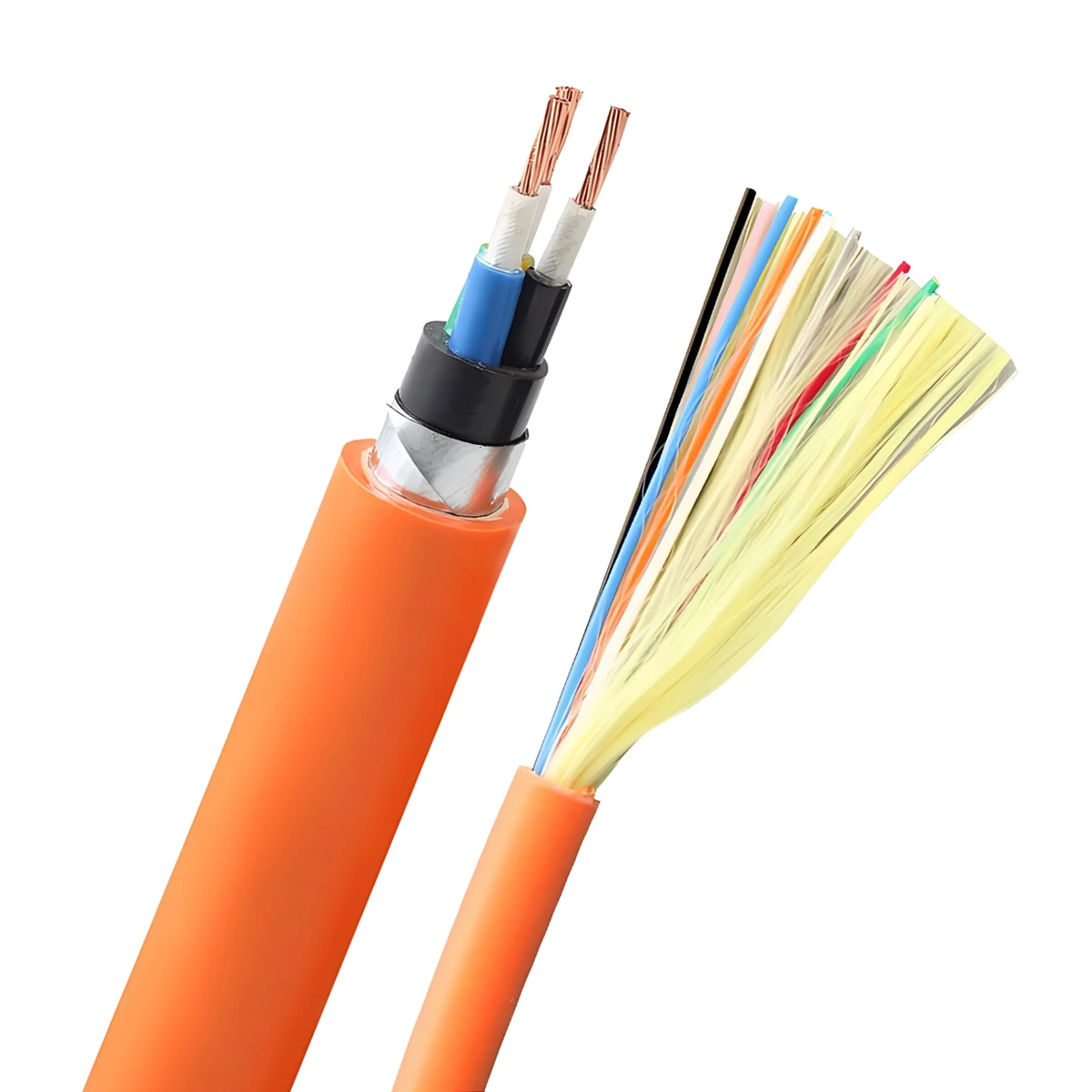Kebo ya PV1-F
PV1-F cable is mainly used to connect key components such as photovoltaic modules, combiner boxes, waingiaji, and batteries in indoor and outdoor solar power generation systems.
ZMS PV1-F cable is professionally irradiated to enhance its insulation performance and mechanical properties. It can meet the specific requirements of photovoltaic applications for cables, such as high temperature resistance, Upinzani wa UV, ozone resistance, and hydrolysis resistance.
ZMS solar cables comply with standards such as EN 50618, BS EN 50396, and meet the HD 605/A1 UV resistance standard. They are also subjected to durability testing according to EN 60216 viwango. Our PV1-F solar cable offers high cost-effectiveness for photovoltaic power generation projects.
- Vipimo: 1.5~150mm²
- Product Standard: EN 50618
- Product Certification: TÜV, Ce, ISO


PV1-F Cable Technical Parameters
- Kondakta: 99.9% Tin-plated copper
- Insulation: LSZH irradiated cross-linked polyolefin
- Ala: LSZH irradiated cross-linked polyolefin (black and red)
- AC Rated Voltage (Uo/U): 0.6/1kV
- DC Rated Voltage (Uo): 1.8kV (between conductors, non-grounded systems)
- Maximum System Voltage (Um): 1.2kV
- Conductor Operating Temperature: -45°C to +120°C
- Operating Environment Temperature: -40°C to +90°C
- Cable Laying Temperature: Not lower than -25°C
- Flame Retardant Rating: IEC 60332-1
- Kima cha chini cha Kipenyo cha Kupinda: 5D (D: Kipenyo cha nje cha cable)
- Installation Methods: Conduit laying, shallow trench laying, cable trench laying, tunnel laying, sandwich laying, supported aerial laying, suspended aerial laying, na kadhalika.
- Service Life: ≥25 years
ZMS PV1-F Certification

PV1-F Datasheet
| Model | Nominal Cross-sectional Area (mm²) | Structure (mm) | Conductor Outer Diameter (mm) | Cable Outer Diameter (mm) | 20°C Conductor DC Resistance (Ω/km) | Cable Weight (kg/km) |
| PV1-F 1X1.5 | 1.5 | 30/0.25 | 1.5 | 4.98 | 13.7 | 40.69 |
| PV1-F 1X2.5 | 2.5 | 49/0.25 | 2.15 | 5.63 | 8.21 | 54.64 |
| PV1-F 1X4.0 | 4 | 56/0.30 | 2.9 | 6.38 | 5.09 | 75.36 |
| PV1-F 1X6.0 | 6 | 84/0.30 | 3.6 | 7.52 | 3.39 | 107.17 |
| PV1-F 1X10.0 | 10 | 84/0.40 | 4.9 | 8.82 | 1.95 | 161.6 |
| PV1-F 1X16.0 | 16 | 126/0.40 | 5.8 | 10.04 | 1.24 | 225.94 |
| PV1-F 1X25.0 | 25 | 196/0.40 | 7.4 | 12.52 | 0.795 | 348.51 |
| PV1-F 1X35.0 | 35 | 276/0.40 | 9 | 14.44 | 0.565 | 470.98 |
PV1-F Long-Term Allowable Current Carrying Capacity

| Installation | Single cable in air | Single cable on the surface of an object | Two cables in contact on the surface of an object |
| Cross Section (mm²) | Carrying Capacity (A) | ||
| 1.5 | 30 | 29 | 24 |
| 2.5 | 41 | 39 | 33 |
| 4 | 55 | 52 | 44 |
| 6 | 70 | 67 | 57 |
| 10 | 98 | 93 | 79 |
| 16 | 132 | 125 | 107 |
| 25 | 176 | 167 | 142 |
| 35 | 218 | 207 | 176 |
| 50 | 276 | 262 | 221 |
| 70 | 347 | 330 | 278 |
| 95 | 416 | 395 | 333 |
| 120 | 488 | 464 | 390 |
| 150 | 566 | 538 | 453 |
| 185 | 644 | 612 | 515 |
| 240 | 775 | 736 | 620 |
| Operating Temperature | 120°C | ||
| Ambient Temperature | 60°C | ||
Maswali Yanayoulizwa Mara kwa Mara
Why Use Specialized Photovoltaic Cables?
Cables account for about 4-5% of the overall cost of a solar power generation project, yet they can significantly impact power output. Improper design or selection of cables in a solar power system can lead to safety hazards, decreased power output, and other performance issues that jeopardize the overall lifespan of the photovoltaic system.
To maintain the longevity, performance, and reliability of a photovoltaic system, it’s crucial to choose specially designed solar cables. All cables used in photovoltaic installations should be able to withstand UV radiation, ozone, sand abrasion, and harsh weather conditions, while also providing excellent flexibility and resistance to deformation under extreme low-temperature conditions. Kwa hiyo, to ensure the long-term stable operation of a solar power plant, it’s advisable to select specific PV cables such as H1Z2Z2-K or PV1-F.
How to Select PV1-F Cable Specification?
Hivi sasa, the most commonly used photovoltaic DC cable is the PV1-F 1×4 cable. Hata hivyo, with the increase in photovoltaic module currents and single inverter power, the application of PV1-F 1×6 DC cables is also increasing.
According to relevant specifications, it is generally recommended that the loss of photovoltaic DC power lines should not exceed 2%. In DC circuits, the line resistance of PV1-F 1x4mm² cable is 4.6mΩ/m, and the line resistance of PV1-F 1x6mm² cable is 3.1mΩ/m. Assuming a working voltage of 600V for DC modules, a 2% voltage drop loss is 12V. Assuming a module current of 13A, when using 4mm² DC cable, the recommended maximum distance from the furthest module end to the inverter should not exceed 120 meters (single string, excluding positive and negative poles). If it exceeds this distance, it is recommended to choose 6mm² DC cable, but the recommended maximum distance from the furthest module end to the inverter should not exceed 170 meters.
To reduce system costs, photovoltaic power plants now rarely configure modules and inverters in a 1:1 ratio. Instead, they design a certain amount of overcapacity based on factors such as sunlight conditions and project requirements. For example, for a 110KW module, a 100KW inverter is selected, and it is calculated based on a 1.1x overcapacity on the AC side of the inverter. The maximum AC output current is approximately 158A. AC cables are selected based on the maximum output current of the inverter. Because regardless of how much the modules are overconfigured, the AC input current of the inverter will never exceed the maximum output current of the inverter.
What Are the Differences between H1Z2Z2-K and PV1-F Photovoltaic Cables?
PV1-F cable is an older version solar cable that complies with the TÜV 2Pfg1169 standard, and its standard certification has ceased updating. In contrast, the H1Z2Z2-K photovoltaic cable complies with the latest TÜV EN50618:2014 certification.
The voltage ratings differ between PV1-F and H1Z2Z2-K cables. PV1-F has a voltage rating of DC: 1.0kV and AC: Uo/U: 0.6/1.0kV, while H1Z2Z2-K has a voltage rating of DC: 1.5kV and AC: Uo/U: 1.0/1.0kV. H1Z2Z2-K can provide higher transmission efficiency and stability.
In terms of structure, PV1-F cable has a single insulation layer, whereas H1Z2Z2-K cable adopts a dual-layer insulation structure. This make H1Z2Z2-K cable superior in durability and protection, especially against mechanical damage and environmental factors.
In summary, H1Z2Z2-K solar cable is more advanced in design, offering higher electrical and mechanical performance, suitable for more demanding application environments. On the other hand, PV1-F solar cable is primarily advantageous in cost-effectiveness, suitable for most conventional photovoltaic systems.
For cost-effectiveness considerations, PV1-F cable can be used for series connections between photovoltaic modules and parallel connections from strings to DC distribution boxes. Meanwhile, H1Z2Z2-K cable can be used for connections between distribution boxes and inverters, as well as for direct current connections in large inverters.
What Is the Lifespan of PV1-F Cables?
The design lifespan of PV1-F photovoltaic cables is typically 25 miaka. This long lifespan is attributed to the choice of weather-resistant and corrosion-resistant materials.
ZMS PV1-F solar cables can be used in an ambient temperature range of -40°C to +90°C. They are suitable for extreme climate conditions. Oxygen-free tin-plated copper is used as the conductor material, ensuring the cable’s conductivity and corrosion resistance. The insulation material of PV1-F is typically low smoke halogen-free cross-linked polyethylene (XLPE) or similar materials, which not only provide excellent insulation performance but also enhance the cable’s heat and cold resistance. The sheath material also uses low smoke halogen-free materials, increasing the cable’s resistance to environmental corrosion, especially in the presence of corrosive substances such as ozone, acids, and bases.
Udhibitisho wa Tüv ni nini kwa nyaya za jua?
Udhibitisho wa cable ya jua ya Tüv inahusu safu ya vyeti vilivyotolewa kwa nyaya ambazo zimepimwa, Kukaguliwa na kuthibitishwa na mtu wa tatu huru wa Kikundi cha Tüv Rheinland, makao yake makuu huko Ujerumani, kulingana na viwango maalum.
Kama aina maalum ya cable, Usalama na utendaji wa nyaya za Photovoltaic ni muhimu kwa mifumo ya umeme wa jua, kwa hivyo wanapitia upimaji mkali na udhibitisho ili kuhakikisha ubora na kuegemea kwao.
Kuhusu udhibitisho wa Tüv kwa nyaya za PV, Maendeleo yake yameendelea kutoka 2pfg 1169/08.2007 kiwango cha en 50618:2014 kiwango. Kiwango cha hivi karibuni ni IEC FDIS 62930, Lakini udhibitisho mwingi wa cable ya jua bado unafuata EN halali 50618 kiwango.

Muhtasari wa Mradi
ZMS iliungana na Nguvu ya Jimbo la Kijani (GSP), mwanzilishi katika miundombinu ya nishati mbadala, kuandaa monumental 10 Mradi wa photovoltaic wa MWP huko Kabul, Afghanistan.
ZMS ilichambua kwa kina mradi wa PV na kuutoa 1X10 na 1X6 nyaya za jua H1Z2Z2-K, 3Kebo za X300 za LV, 3Kebo za X300 za MV, pamoja na ACSR 185/30 nyaya za juu. Kukamilisha hivi vilikuwa vifaa muhimu kama viunganishi vya PV na visanduku vya zana vilivyoratibiwa kwa uangalifu.
Kujitolea kwa ZMS kwa ubora na kutegemewa kuliwezesha usakinishaji laini na ufanisi wa kufanya kazi, kuchangia miundombinu ya nishati endelevu ya kanda.
Huduma ya ZMS
Utengenezaji Uliobinafsishwa
We understand that every customer's needs are unique. Kwa hiyo, tunatoa huduma za kubinafsisha kebo za jua, kurekebisha kila undani kutoka kwa vipimo vya kebo hadi miingiliano ya unganisho kulingana na mahitaji yako mahususi ya mradi, kuhakikisha utangamano wa juu na ufanisi.
Uratibu wa Majibu ya Haraka Ulimwenguni
Kwa msaada wa mtandao wetu wa kimataifa wa vifaa, ZMS huhakikisha kwamba maagizo yako ya kebo ya photovoltaic yanafika sehemu yoyote ya dunia kwa usalama na upesi. Timu yetu ya kitaalamu ya vifaa hufuatilia kila hatua ya usafirishaji ili kuhakikisha utoaji wa bidhaa zako kwa wakati unaofaa.
Msaada wa Kiufundi
ZMS's technical support team is always on standby. Changamoto zozote za kiufundi unazokutana nazo, tunaweza kutoa majibu ya haraka na ufumbuzi wa kitaalamu, kuhakikisha matumizi ya mtumiaji bila wasiwasi.
Uzalishaji wa Kijani
Kebo zetu za jua na vifaa vinafuata kwa ukali viwango vya mazingira wakati wa mchakato wa uzalishaji, kupunguza athari zao kwa mazingira. Kwa kuchagua ZMS, sio tu unawekeza katika nyaya za ubora wa juu wa photovoltaic lakini pia unachangia maendeleo endelevu ya sayari..








